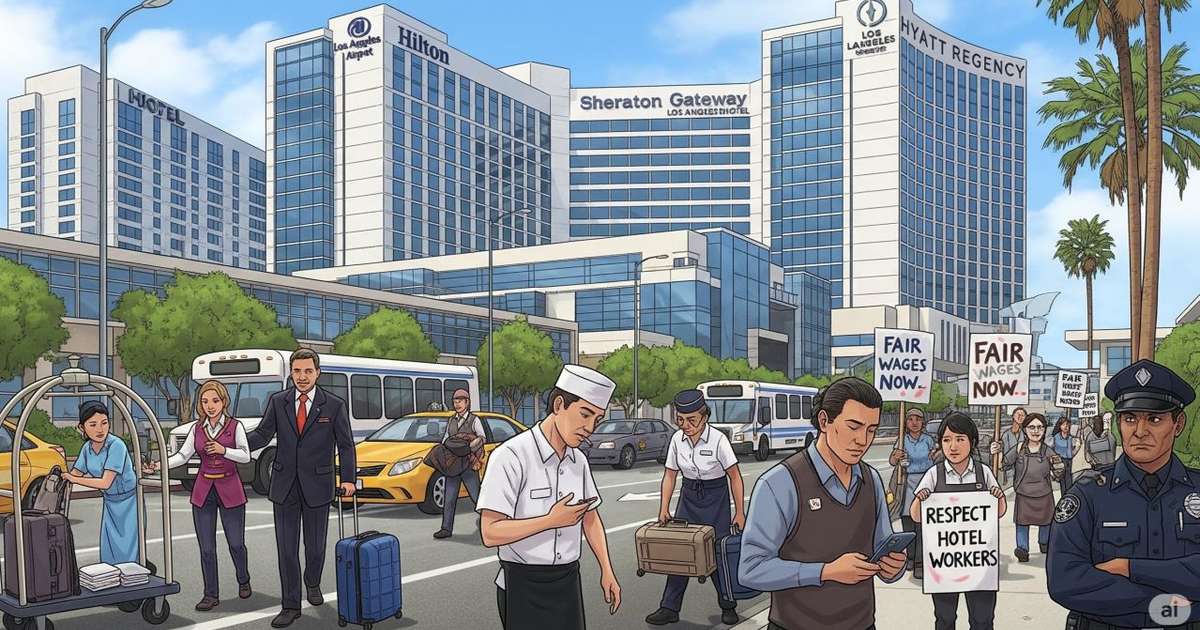
The travel industry’s outlook has brightened in recent months, driven largely by high-income travelers booking premium flights and luxury accommodations. But a full recovery remains uneven—particularly in segments serving middle- and lower-income travelers, who are scaling back spending amid persistent economic uncertainty. As we enter August 2025, the Los Angeles hotel industry—particularly properties near LAX—is facing a moment of both opportunity and pressure.
A Strong Start to 2025: Occupancy, Rates, and Revenue Up
According to a recent report by The Real Deal, Los Angeles hotels posted promising performance metrics in the first half of 2025:
- Occupancy reached 72.3%, up from 70.4% during the same period last year.
- Average Daily Rate (ADR) rose by 1.6% to $197.01.
- Revenue per Available Room (RevPAR) jumped 4.3% to $142.46.1
These numbers reflect the continuing strength of demand from premium travelers—particularly international visitors and business-class customers—who are showing strong appetite for travel despite inflation and interest rate volatility.
LAX Corridor: High Occupancy, Lower Rates
Airport hotels in the LAX corridor consistently post some of the highest occupancy rates in L.A. County, often exceeding 81%. However, they operate with some of the lowest ADRs—as low as $78 in early 2024.2 This pricing strategy has made LAX hotels resilient during downturns. Their guest mix—price-sensitive business travelers, airline crews, and transit passengers—remains stable, even as leisure trends fluctuate.
Labor Mandates: A Tipping Point?
That stability, however, is now being tested. As of July 1, 2025, the City of Los Angeles increased the minimum wage for hospitality and airport workers to $25/hour, with a path to $30/hour by 2028.3 The early effects have been sharp:
- Renovations paused or cancelled
- Hiring freezes
- Multiple LAX-area hotels listed for sale
Industry groups warn that the new mandates may lead to hotel closures—particularly among independent, budget, and economy-tier operators. This isn’t just a wage issue—it’s a fundamental challenge to the economic model that’s kept airport-area hotels viable for decades: high occupancy, low rates, and lean operations.
What’s Next for the Sector?
The path forward will likely hinge on three key dynamics:
- Labor Policy & Public Response: A petition drive is already underway to place the wage mandate on the 2026 ballot. If successful, this could shift legislative momentum—or at least prompt compromise.
- Middle-Class Travel Recovery: With inflation and household debt rising, many middle-income Americans are trimming travel budgets. This could soften demand at airport hotels going into fall and winter.
- Event-Driven Demand Spikes: The 2026 FIFA World Cup and 2028 Summer Olympics may bring temporary boosts. But without sustainable margins, many operators may struggle to survive long enough to benefit.
Final Thought
The LAX hotel corridor sits at a crossroads. On one hand, strong early-2025 performance proves the sector’s fundamental strength. On the other, steep wage mandates may derail its recovery. As someone deeply engaged in hospitality operations, I believe now is the time for collaboration—between hotel owners, labor leaders, policymakers, and investors. We need a sustainable model that respects both worker dignity and operational viability. Because one without the other isn’t true progress.
Sources
1 Los Angeles hotel performance (The Real Deal): https://therealdeal.com/la/2025/07/23/los-angeles-hotels-see-more-visitors-so-far-in-2025/
2 Airport hotel rates and occupancy (LA Business Journal): https://labusinessjournal.com/news/hotel-rates-remain-grounded-at-lax-as-they-soar/
3 Wage mandate impact (NY Post): https://nypost.com/2025/07/02/business/la-hotel-owners-sound-alarm-over-new-30-minimum-wage-threaten-mass-closures/
Connect with Ajay here.
Ajay Jadhav
Front Office Manager at Sheraton Gateway LAX
BHG
Please visit:
Our Sponsor
